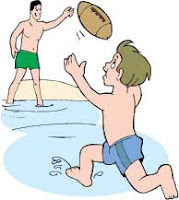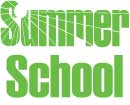Happy May Day! May is Teacher Appreciation Month, which gives us another chance to let you know how much you're appreciated. At
Excel Math, we are very thankful for teachers such as you, who go the extra mile for their students. On behalf of the entire Excel Math team, thanks for helping students achieve beyond expectation and for hanging in there even when the going gets tough!
Excel Math gives you the tools you need to help build confident, successful math students. More than just worksheets,
Excel Math lessons include hands-on visuals and manipulatives, stretches (brainteasers), cooperative learning activities, interactive opportunities (including Projectable Lessons) and a new Common Core Edition coming for fall. You also receive easy-to-teach lessons (to use as a supplement or in a core position), guided practice, basic Fact Practice, Homework, and regular assessments. Walk through a lesson on our website:
www.excelmath.com/tour/tour01.html
At
Excel Math, we appreciate teachers! That's why we provide lots of free teacher helps and resources on our website. And it's why we continually update our math lessons to provide teachers with the best materials possible. This certificate is a small token of our appreciation for your perseverance and enthusiasm for your students. Feel free to print it for yourself (just add your name on the blank line) or pass it on to a deserving colleague. For student certificates and awards, visit our website:
www.excelmath.com/downloads.html
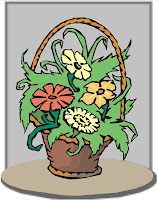
Now that we're beginning the month of May, plan a May Day celebration for your students with some math thrown in for good measure. Talk about the shapes of various objects around your classroom. Point out a cone, cylinder, sphere, cube, and other shapes your students can identify.
Explain that in honor of the month of May, everyone will make a cone shape and then turn it into a May basket. Give each student a colorful sheet of heavy paper or cardboard. Let him roll it into a cone shape. Provide scissors to trim the top of the cone opening. Tape the cone together. Let the student punch a hole on each side of the cone, then string a chenille wire handle through the holes, bending it slightly to form a handle. (Or download a May basket pattern from
Scholastic.com.)
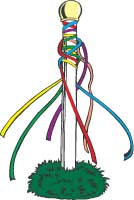
You can have each student measure the diameter of the cone opening and then calculate the radius by dividing the diameter in half. Let the students work in pairs to check their work.
If you have time, let your students make tissue paper flowers to put in the cone basket. Give the students each a half piece of paper on which to write a cheery spring greeting or decorate a card for a family member or friend. Encourage each student to leave a flower basket on their friend's doorknob (without being noticed, if possible).
While the students work, talk about May Day traditions and the May Pole. May Day is historically a joyful and festive time of dancing, singing and bright decorations. Wrapping a May pole with colorful ribbons as people dance around the pole is one of the ways people have celebrated for centuries. Some towns in England and Scotland take a holiday on May Day and hold town fairs complete with parades where children carry beautiful garlands of flowers. Read more about May Day at the
Edina Historical Society blog.
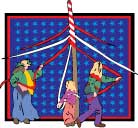
Are you planning any special May celebrations in your classroom? Share one that your students enjoy by leaving a comment in the box below. (Click on the word
comment.)
New to Excel Math? Visit our
website to learn more and take a look at sample lessons:
www.excelmath.com











